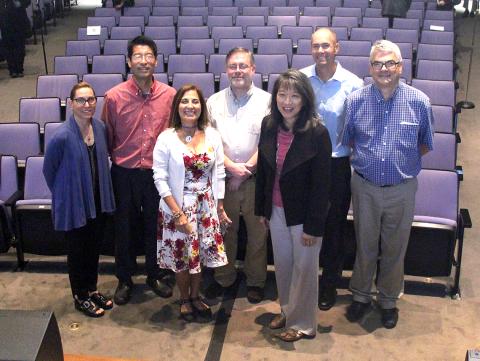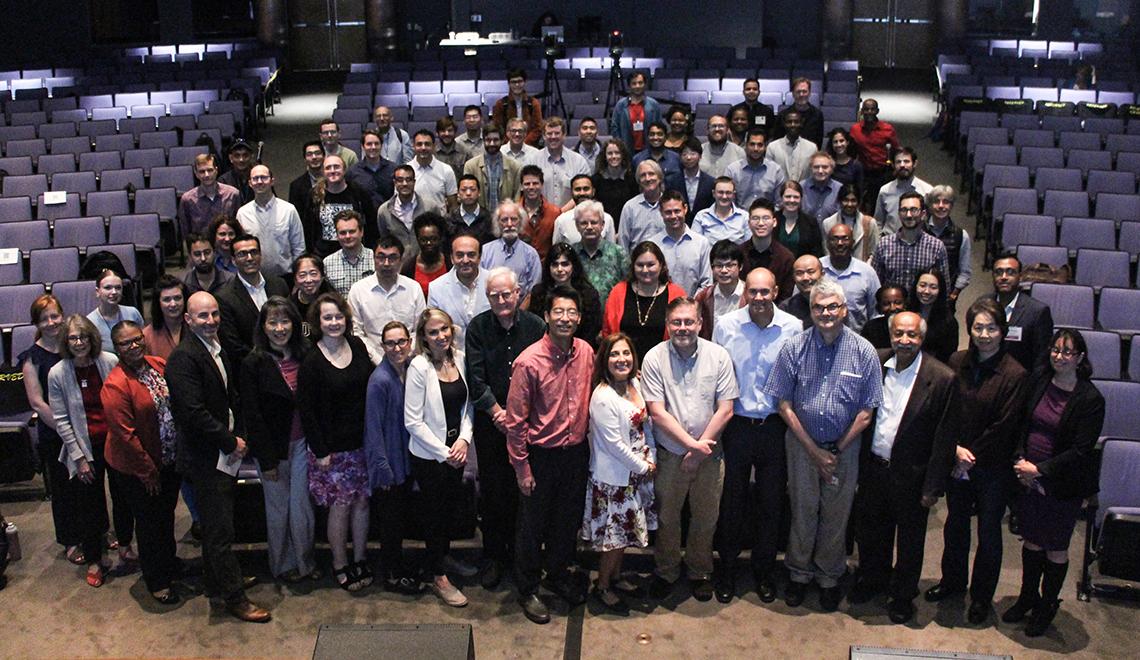IMAG Marks 20th anniversary
Multiscale Modelers Convene at NIH

The spark in 2003 that launched the Interagency Modeling and Analysis Group (IMAG) has flared into a potent scientific catalyst and not only among the multiple federal agencies that fund computational modeling of biomedical, biological and behavioral systems—including NIH, the National Science Foundation, NASA and the Department of Energy.Members of the Multiscale Modeling Consortium (MSM), external researchers who vie for federal grants in the computational modeling field, also are feeding the flame.
IMAG celebrated its 20th year during the two-day annual IMAG MSM meeting in late June at the Natcher Conference Center and via virtual attendance.
While the field of mechanistic modeling has come far from the days when computational modelers had to make an effort to locate one another within these agencies, the IMAG MSM community has become a vital proponent for this technology as a platform now more widely used to study complex biological systems. The meeting theme was “Lessons from the past to guide the future.”

From NIH, organizers of the meeting included IMAG co-chairs Dr. Grace Peng of the National Institute of Biomedical Imaging and Bioengineering (NIBIB), Dr. Elizabeth Ginexi of the National Center for Complementary and Integrative Health (NCCIH) and Dr. Reed Shabman of the National Institute of Allergy and Infectious Diseases (NIAID).
Reflecting on the evolution of IMAG over 20 years, Peng’s opening talk described the network of federal and external proponents as very synergistic.
“The IMAG and MSM are the sum of their parts and everything lives on the wiki,” she said. The IMAG wiki, https://www.imagwiki.nibib.nih.gov/, established at the organization’s outset, is where much of the research collaboration is accomplished and the tool has withstood the test of time.
The origin of the group coincided with Peng’s arrival in September 2002 as an NIBIB program director with a curiosity about NIH’s computational modeling scene. IMAG was formed in April 2003 by program staff she convened from NIH and NSF. The group raised the idea of multiscale modeling as a niche that IMAG could address.
“This was a grassroots effort to promote modeling above and below the scales of interest,” she said, referring to the tendencies of modelers to push the boundaries that biomedical scientists typically observe in terms of the spatial scales of their research.
Peng referenced a seminal 2003 paper by New Zealand biomedical engineer and MSM member Dr. Peter Hunter of the University of Auckland. That paper introduced the integrated continuum framework that couples mathematical modeling with observable behavior in studies of cardiac anatomy.

Peng said the paper introduced “how the scales of the human body should be thought of in terms of the spatial and temporal scales, from genes to proteins, to cells, tissues, organs and clinical medicine.”
Peng also referred to IMAG member Dr. Ron White, who at that time represented NASA within IMAG. He formulated a vision for the foundational structure needed to create a digital human. The digital human concept would model the multiplex systems of human anatomy and physiology as a reference for a person for whom the virtual system is designed.
“Throughout the years we’ve been moving to the population levels as well,” Peng continued. “Think of where we have come from!”
Jumping forward to a fall 2019 meeting focused on integrating mechanistic modeling and machine-learning methods, Peng said, “It was basically a tsunami of ideas, applying MSM-ML methods to patient safety models and digital twins.” Of the 2020 and 2021 meetings that were respectively truncated and cancelled due to the Covid-19 pandemic, Peng commended organizers’ foresight in building a fully developed agenda around the theme of diversity in MSM.
“They were way ahead of the game,” she said. “Diversity of people, methods and pedagogy...it’s all being talked about regularly now.”
Today, the group seems to be on the cusp of even greater things. Peng and subsequent speakers referred to “the big project,” a gathering of all the individual models at numerous spatial and temporal scales into a large integrated platform for studying biomedical, biological and behavioral systems—the digital human concept—on the verge of realization.
